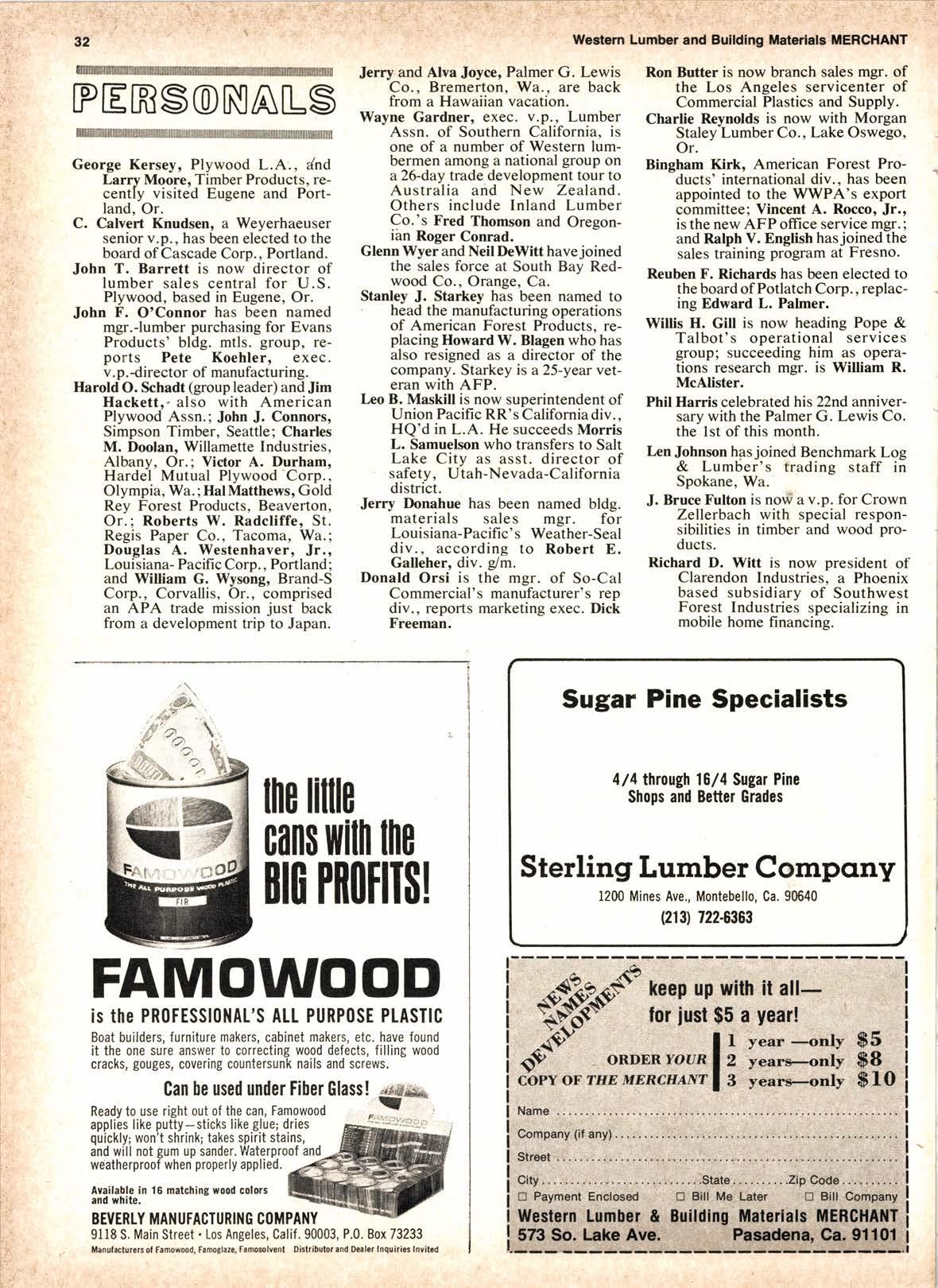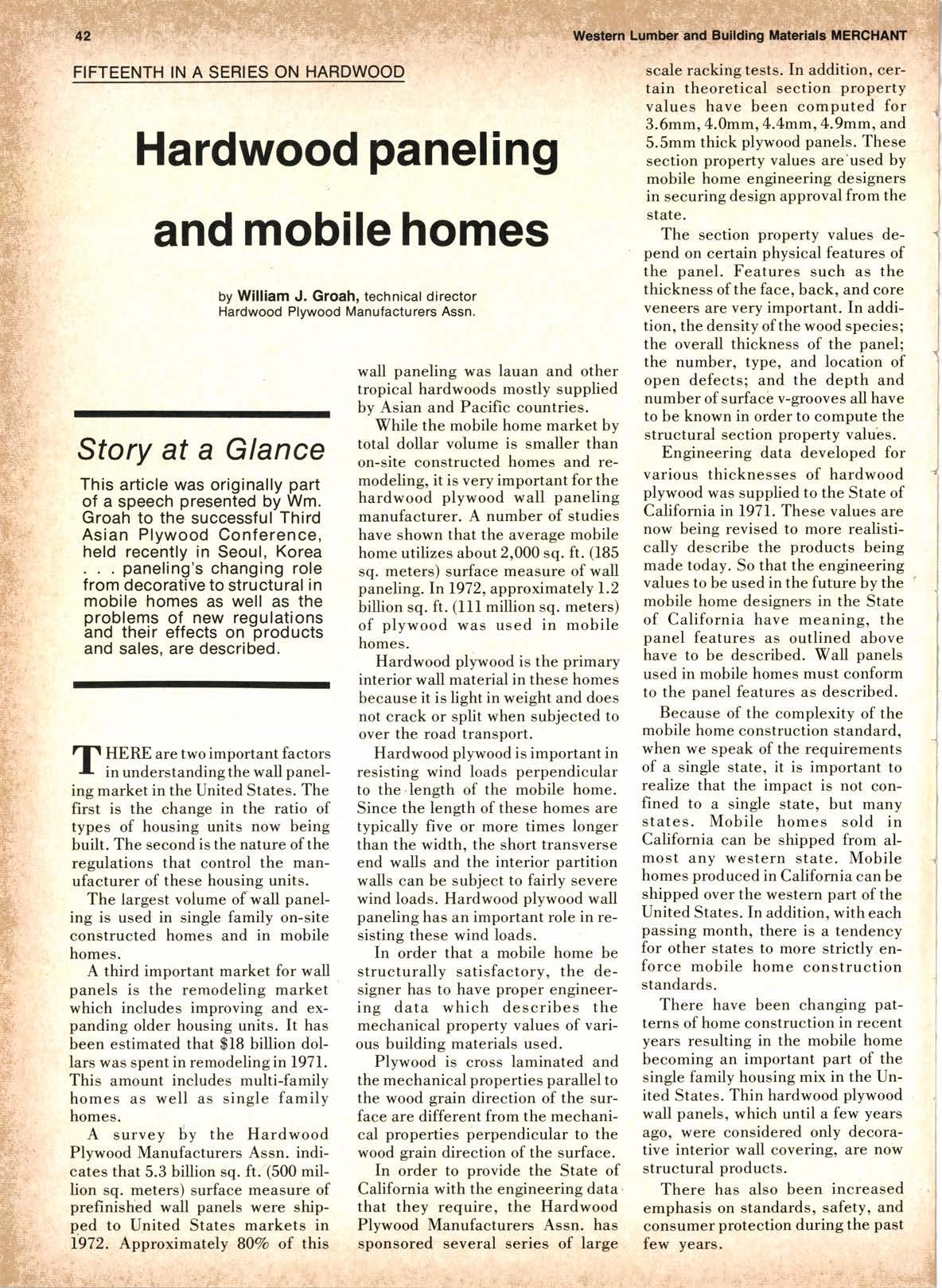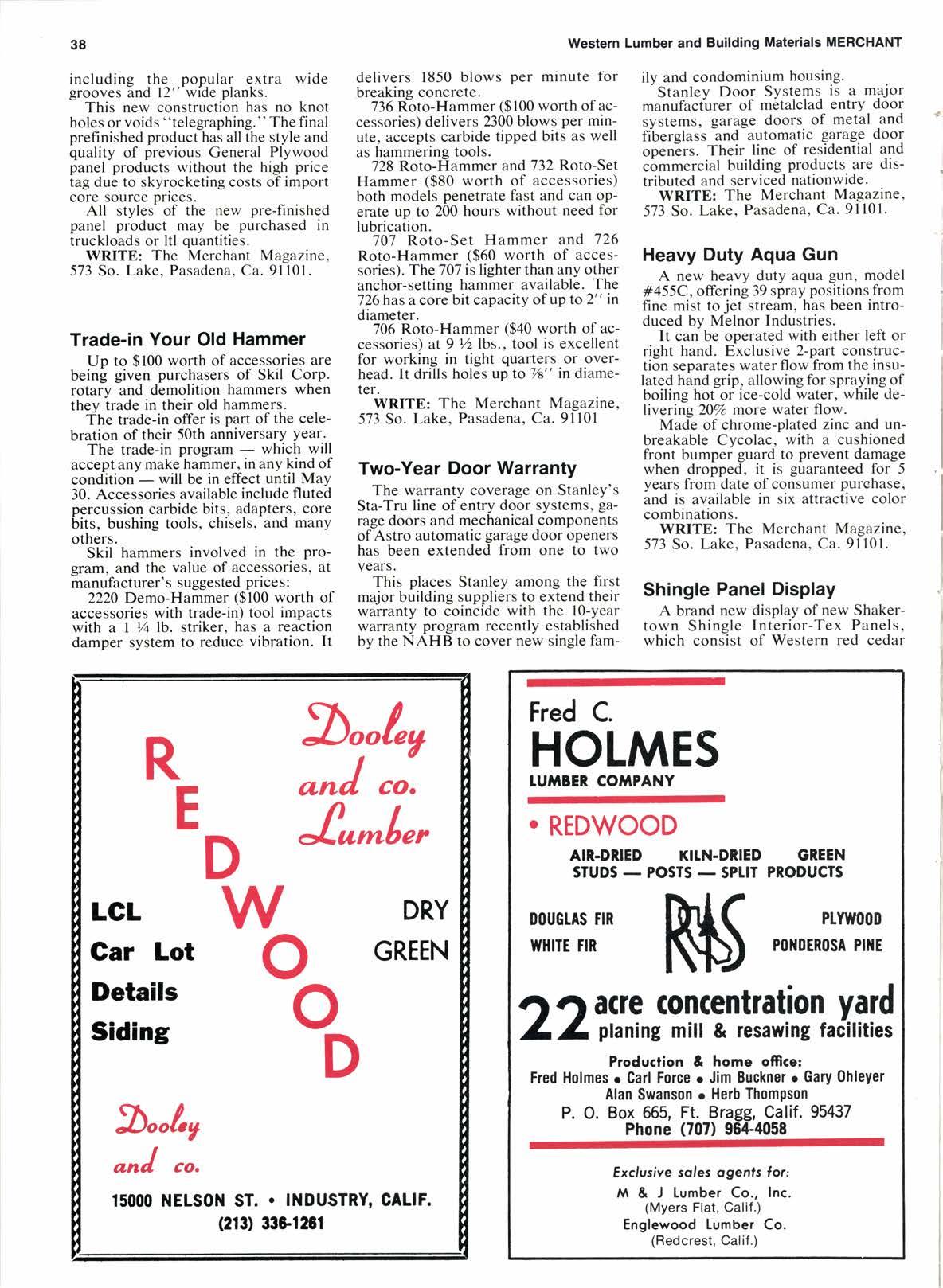
3 minute read
Home lmprovement Boom
According to the United States Department of Commerce, the home remodeling and maintenance business is a $17 billion market. While industry sources claim the market's true value is closer to $20 billion total, one thing is certain whatever the precise figures: the do-ityourselfers are gaining so many converts that home remodeling promises to be one of the fast growing markets in the country over the next several years.
Improvement of the domicile is the first priority for 42% of all Americans when it comes to spending their discretionary income. So says R. H. Burskin Associates, an independent consumer research firm, after a recent nationwide survey.
The study shows that the desire for home improvement is consistently strong among all segments of the population with the exception of 18-24 year-olds whose first preference is a new car. The vote for improving the home reaches its highest intensity among *o-".t 2"5-34, the fastest growing age group.
The number of home handymen is at the 20 million mark. Over the last decade, national dealer figures reflect this fact with sales to the individual home owner ising 50Vo compared to sales to professional contractors.
lmportance of Distribution
The National Building Material Distributors Assn's. past-president, Milton J. Orr, recently remarked on the growing importance of the NBMDA distributor in the marketing of building material products.
Sales by distributor warehouse members is approaching $4.8 billion annually. Estimated member investment in warehouses and land totaled $444 million in 1973 with inventory and receivables assets running at the $780 million level. The association's distribuiors employed an average of 2I,000 people throughout the United States and Canada working a total of 168,000 daily man hours.
"In order to sustain a sales volume of $4.8 billion, NBMDA members have an investment approaching $1.25 billion plus the time and talents of 2I,000 people. To effectively manage this investment we, as wholesale distributors, want and need the assistance of our manufacturing suppliers to help us each year to develop our bu_stne^ss plan, market plan, operating forecasts and sales forecasts."
Discounter's Theft Problems
Thieving employees in discount retailing runs $f 02.53 per apprehended employee, compared with only $9.24 per apprehended shoplifter, according to a new study of 1,188 discount department stores by Mass Retailing Institute.
Employee apprehensions ran 37o of the total employment in the average store; 3l7o of the apprehended employees were prosecuted, and927o of those were convicted.
:ri.ria:lj:$rw
MAll{ SIREET, Port Gamble, Wa., reflects extensive restoration that earned honorable mention for Pope & Talbot in the U.S. Department of Transportation's 1973 historic site preservation competition. Port Gamble is the oldest continuously operating sawmill in the U.S. with town's developer, Pope & Talbot, cunently involved in a maj-or restoration to preserve its historical significance. Virtually allthe homes and c0mmercial Dull0lngs nave been restored to their original mid-nineteenth century New England architectural style.
Record Pallet Production
Production of wooden pallets set new records in 1973, according to William E. Sardo Jr., exec. v.p., National Wooden Pallet and Container Assn. Although final figures are not yet in, he said the past year will show the greatest gain in a single year in units produced by the pallet industry.

ln 1972, more than 154 million wooden pallets were produced, consuming 3.86 billion board feet of lumber, or l0.L47o of national lumber production. The '73 lumber consumption figure is expected to be about I0Tohigher.
He said the 1974 outlook for pallets is "excellent" and will exceed 1973's record-shattering production. Increased demand, he explained, will result from formation bf a national pallet leasing system and plans of the U. S. Postal Service to palletize most bulk mail shipments, particularly magazines. Sardo said raw material scarcity is a problem, however, because of hardwood shortages. NWPCA is working on a proposed Southern Pine pallet specification.
Hardwood Flooring Demand
Hardwood flooring producers, plagued by continuing lumber and manpower shortages, and still feeling the effects ofrecent government price controls, have, on the plus side, s"ett signs in the past year ofthe possibility of recovering some of the industry's residential construction markets.
"It is impossible to put a yardstick on the unsatisfied demand for oak flooring," said Henry H. Willins, exec. v.p., National Oak Flooring Mfg. Assn.
He said hardwood flooring capacity is only 35-407o of the industry's peak capacity in 1955 of 25 million board feet a week. In addition, hardwood lumber shortages have curtailed production and a substantial portion of that capacity has been idle as a result.
The industry dates its loss-of-market problems to 1966, when, say industry spokesmen, an FHA decision to accept wall-to-wall carpeting as an alternative to hardwood o'finish" flooring, pulled the bottom out of the flooring market.










